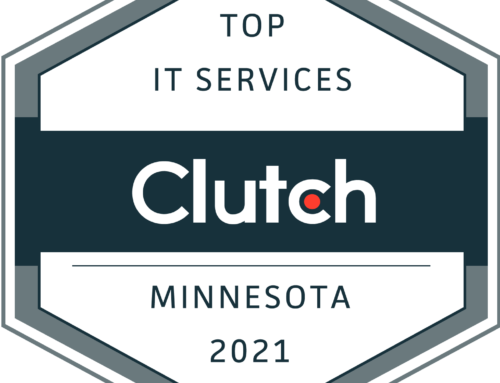Why are Salesforce Field Service Best Practices Important?
Salesforce Field Service Best Practices are critical to getting the most out of your implementation. Salesforce has been named the global leader in CRM by International Data Corporation (IDC). Currently, over 150,000 customers globally trust Salesforce to help drive results in the sales, service, and marketing spaces. Salesforce has now expanded its Service Cloud offerings by adding Salesforce Field Service. Salesforce Field Service (“FSL”) works with Service Cloud, adding functionality for dispatching, scheduling, agent routing, work orders, inventory tracking, knowledge articles, mobile support, and reporting field service representative’s activity. Salesforce’s FSL product focuses on putting the right mobile employee in the right place, at the right time, to meet or exceed customers’ expectations.
You’ll find field service management helpful in numerous industries, chiefly those that employ mobile workers or contractors. That includes public utilities and transportation, vending machine services, healthcare, remote patient monitoring, telecommunications, construction, financial services, retail, professional services, manufacturing, child care, and many more!
Best Salesforce Field Service (FSL) Features:
Salesforce Field Service applications support your field service methodology while making it quick and easy for your users to enter and update records. You can optimize Salesforce to provide your users with the best experience possible. Your goal should be to simplify the user interface and overall navigation to drive the best user adoption.
This includes the configuration of the following CRM components:
- Setup of Service Cloud cases for new issues
- Setup of service-related assets and entitlements
- Identification of field service territories
- Setup of resource skills and work types
- Setup of work order management, service appointments & route optimization
- Setup dispatch console to drive rep assignment efficiency
- Setup of field service inventory as appropriate
- Document and manage scheduling policies
- Create service resource timesheets and resource calendars
- Setup of billing, invoicing and payment applications
- Creation of key report and dashboard analytics
The list above solely represents core features. It does not, however, account for hundreds of customized applications that can be found on AppExchange or built to your specific needs. Salesforce’s FSL application is extremely flexible and can integrate with numerous third-party solutions that align with your business needs. The key here is to set up only the functionality that will be needed to optimize your field service process.
Top 10 Salesforce Field Service Best Practices:
1. Start with a strong discovery process:
Discovery is the single most underrated phase of software development and maybe the most important. Many companies rush through the discovery process because they think they already know what they need. Then, halfway through development, they get blindsided by something that would have been easy to handle at the beginning but now threatens to derail the entire project. One of my Salesforce Vetforce leaders explained it best. “If I rush into the battlefield without knowing the enemy, their capabilities, the terrain, weather, etc, it is not going to end well”. The same is true with Salesforce development, the upfront planning is critical to the success of the mission.
What a good best practice discovery looks like:
- Strong upfront research on the key discovery questions that define the project’s goals.
- Review of the current state and future state field service process.
- What problem should the Salesforce Field Service (FSL) application solve?
- Who are the users and stakeholders that should be included in the discovery process?
- How broad is the project’s scope and what is the budget for phase 1?
- What technology aspects best addresses the problem? Will this include a mobile app, CTI software, and/or integrate with the billing system?
- When is the project needed? Timelines are important!
2. Teamwork is critical, thus so is your team:
A strong project team will be key to the success of your implementation projection. It is best to assemble a project team that is made up of employees from different stages of the process. In addition, individual role assignments within the team need to be clearly communicated. The commitment of the executive board is also crucially important.
If you are using a partner to implement the Salesforce field service solutions it will be very important to look at the team as a whole, be honest about each member’s strengths and weaknesses, look for complementary skills, shared values, and similar working styles create a team that is most efficient. Your first step should be to determine what capabilities are needed to successfully implement your strategy. We recommend the use of a capability matrix to understand if the Salesforce consultant has the right skillsets to fill the gaps of their peers’ in the current team.
3. Map out the customer journey:
A good understanding of the end-to-end customer journey is key to ensuring your field service process provides the ultimate experience. Analyze all the different pain points and try to think of how the Salesforce field service software can streamline the experience. We understand that a customer’s time is one of the most important considerations so you should look to build a simple, yet efficient model to enrich their experience.
We recommend building process flow diagrams to ensure that everyone involved is on the same page and has a clear understanding. Once you have the customer journey mapped out, you will be able to clearly understand which FSL features need to be included in the business model.
4. Map out the field service agent journey:
Similar to the customer journey, the service agent’s goal is to make sure the team is in alignment. If your field service team is not optimized and aligned with the buyer journey you will hinder a maximized outcome. We know that happy employees create happy customers, so your goal should be to make the field service agent experience equally as satisfying. Studies show that companies with satisfied employees show 147% higher earnings per share than their competitors.
5. Create an implementation checklist:
We understand that implementing new field service software isn’t simple. It will be very important to simplify the complexity by starting with a strong implementation checklist to outline the critical components of the implementation and keep everyone on the same page. A good example of this can be found in the airline industry, they use pre-flight checklists to save lives. The pilot is aware of the importance of checking a list of tasks to prepare an airplane for takeoff. These include checking the operation of the altimeter, fuel gauges, flight controls, magnetos, engine idle, and other system parameters.
6. Develop a mobile-first strategy:
Let’s face it, the future of field service will be performed on a mobile device. Native mobile experiences can take advantage of built‑in phone features such as cameras and maps, enabling employees to use at work the same mobile features they enjoy in their personal lives. With the Salesforce field service mobile application, agents can manage their workflows anytime, anywhere and be more responsive than ever before. By optimizing the experience on the mobile device agents can focus on what matters most with prioritized alerts, including deep insights about past incidents, similar and repeat alerts, knowledge articles and key metrics. Agents can quickly get to the root cause of a service performance issue or an outage, collaborate with different teams and launch remediation actions immediately from the FSL mobile application.
7. Document the Salesforce Field Service software requirements:
It is critically important to document your user stories and application requirements. Work with stakeholders to generate ideas, recommend FSL best practices, build a comprehensive list of requirements that can be reviewed and prioritized against budget. The key concept here is to gather ALL requirements, add estimates for development, group by development synergies, and then review with the stakeholders. Having estimates in place before the final review allows executives to prioritize features in accordance with the budget. Having priorities in place also helps developers make the best use of unexpected time and unforeseen delays. Construct use-case diagrams to guide the design and layout of a flexible timeline of what can be completed, typically following the user journey discussed above.
8. Build Key Performance Metrics:
Determine which Key performance indicators (“KPIs”) match your specified objectives and which FSL product features contribute to those KPIs. Enable stakeholders, subject matter experts, field agents, owners, and executives who are responsible for successful service delivery to make smarter, real-time decisions based upon FSL performance analytics.
In specifying your key metrics, it is important that they are SMART (specific, measurable, acceptable, realistic and time-based). You get what you measure so starting with these key metrics at the beginning of the project is very important to ensure that the architectural decision is aligned from the beginning.
9. Build-in Predictive Intelligence:
Use Predictive Intelligence to automatically categorize and route issues to the right resolution team, while empowering technicians with AI-assisted knowledge for faster resolutions. Predictive Intelligence applies machine learning to historical request patterns, allowing it to become increasingly accurate in its predictive recommendations. Use service reports and predictive analytics to create a proactive component replacement process. Understanding key failure points and timelines will create enhanced customer satisfaction, reduce service costs, and will generate new revenue opportunities.
10. Continual Salesforce FSL improvements:
It is very important to make sure that all stakeholders understand that the Salesforce FSL application is like a living animal and will require ongoing upkeep. There will be changes and improvements to the Salesforce Field Service platform, improvements to your business process, employee turnover, product changes – all of which will impact how you deliver service. You will need to continuously align your data, people, and business goals to successfully measure and manage your strategic organizational goals.
Summary – Salesforce Field Service Best Practices:
We hope the Top 10 Salesforce Field Service Best Practices provided above will be helpful for your upcoming implementation. If have any questions as you work through the process please don’t hesitate to reach out. We provide enterprise-wide field service digital transformation through actional strategy, implementation, change enablement, custom development, and managed services.
Cirrius Solutions is the #1 ranked Salesforce FSL solution provider helping companies achieve a strategic vision, improve service performance, and increase value to stakeholders. Our top 1% customer satisfaction rating says it all, the Cirrius team will provide you with a 5-Star experience!






